How Babies Learn to Chew and Swallow with Dawn Winkelmann, MS, CCC-SLP @msdawnslp
- How babies learn to chew and swallow…and babies do not need teeth to begin the learning how to eat process
- What shape and size foods should be in order for babies to safely self-feed from 6 months of age and on
- When to transition to smaller pieces of food safely and ideas for how you can help your baby learn how to chew and swallow

LISTEN TO THIS EPISODE
Episode Description
How does my baby learn to chew and swallow food? In this episode Dawn Winkelmann, MS, CCC-SLP is explaining everything you ever wanted to know about how babies learn to chew and swallow food.
About the Guest
- Dawn Winkelmann, MS, CCC-SLP is a feeding therapist specializing in baby-led weaning. She is the product designer for ezpz and creates all of their baby-led weaning gear including open cups and utensils for babies.
- Dawn helps parents, caregivers and healthcare providers learn about the mechanics of how babies learn to eat and her business website is here.
Links from This Episode
Dawn @msdawnslp is a baby-led weaning expert and product designer for ezpz. The baby-led weaning products she designed for babies 6-12 months mentioned in this episode are:
- Baby-Led Weaning with Katie Ferraro program with the 100 First Foods™ Daily Meal Plan, join here: https://babyledweaning.co/program
- Baby-Led Weaning for Beginners free online workshop with 100 First Foods™ list to all attendees, register here: https://babyledweaning.co/baby-led-weaning-for-beginners

Latest Episodes
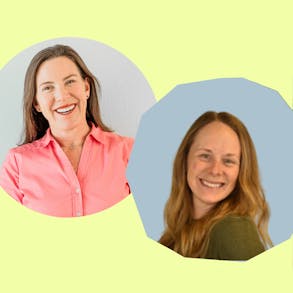
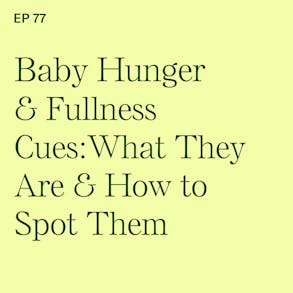
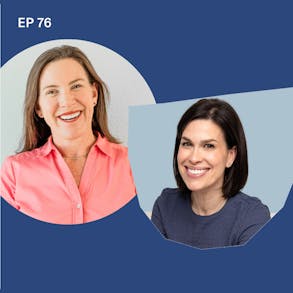
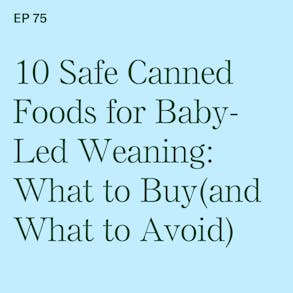
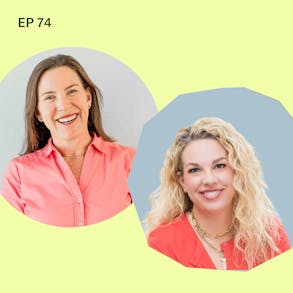
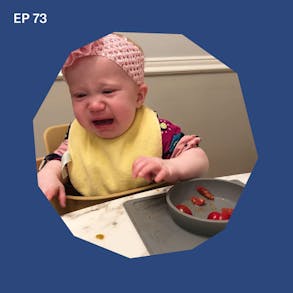
Katie Ferraro (0s):
Checking in real quick about peanuts. Have you guys offered your baby peanut protein yet? Peanuts are one of the big nine allergenic foods. Those are the nine foods that account for about 90% of food allergy. And there's really good data to support early introduction of peanut for babies as a way to lower the risk of peanut allergy. But peanuts are tricky, right? Cuz while there is new data and updated guidelines that show us that babies should be starting peanuts for the most part around six months of age, we know that thick globs of nut butters or intact nuts are choking hazards. My absolute favorite way to offer babies peanuts safely are the Puff Works, baby peanut puffs. So Puff Works are a no stress, low mess, safe way to do peanut in a puff, perfectly shaped for BABYLED Weaning. And there's some other puffs out there that I don't love because they have added sugar or salt, which baby shouldn't have.
Katie Ferraro (44s):
But the puff works brand are formulated for your Infant. They're the softest puff on the market. So you can start them. Even if your baby doesn't have teeth yet and you can get 15% off puff works, baby peanut puffs with my affiliate discount code BABYLED that's BABYLED L E D. If you had to Puffworks.com,
Dawn Winkelmann (1m 0s):
I'm glad that you're just letting her be able to do that because she has to have that tongue movement established so that upper lip can actually overextend and the tongue can come more into the mouth as she starts to practice.
Katie Ferraro (1m 12s):
Hey there I'm Katie Ferraro, Registered dietician, college nutrition professor and mom of seven specializing in baby led weaning here on The baby Led Weaning Made Easy podcast. I help you strip out all of the noise and nonsense about feeding, leaving you with the confidence and knowledge you need to give your baby a safe start to solid Foods using BABYLED Weaning. Hi Dawn. Thanks so much for being here again on The baby Led Weaning Made Easy podcast.
Dawn Winkelmann (1m 43s):
Thank you so much for having me, Katie. It's great to be back.
Katie Ferraro (1m 46s):
It's been a while, but you're definitely still like far and away. Like the most frequently interviewed guest on the podcast because I love getting your expertise as an SLP. Who's also a feeding expert specializing in baby led weaning, and you're a product designer for EZPZ. So before we get started, like what's going on at EZPZ, you guys got any new products coming out.
Dawn Winkelmann (2m 5s):
We do. We just launched our happy Cup and happy Utensils for older toddlers, two years plus, and we have a lot of new baby stuff coming down the pike too. So stay tuned, everyone.
Katie Ferraro (2m 17s):
I love the happy stuff. So you sent me Cups and the Utensils. My kids have sized out of the Mini, which we use for a long time, but they love they call. 'em the big kid Cups now. And sorry, I'm always blowing you up by tagging you, but I like love watching them use your products, especially the knife, like the happy knife. I know we'll talk about feeding milestones and babies don't need to learn how to use knives, but you guys, your bigger kids will need to learn how to use knives and that knife Dawn, like it cuts food, but not your finger. It's amazing.
Dawn Winkelmann (2m 43s):
Yes. I, it took a long time through the development process to make sure that we had a knife. That's able to work on the spreading milestones and the cutting milestones, but not cause boo boos at the same time. So it's important.
Katie Ferraro (2m 56s):
All right, let's talk about babies who don't need knives or forks. We're here today to talk about how your baby learns to Chew and Swallow. And I get so many questions as do you about like, how is this really gonna work? There's this piece of food and they don't even have any teeth. And a lot of parents worry, gosh, my baby's not ready to start solid Foods cuz they don't have teeth yet. So is having teeth, a prerequisite for needing to start solid Foods.
Dawn Winkelmann (3m 17s):
Yeah, I hear this all the time too. And no teeth are not needed. That's not a prerequisite. When we start solids around six months of age and baby showing all the signs of readiness, they generally have no teeth and that's totally fine because developmentally teeth are not needed for a soft, moist solid food. During the learning process of mastication, mastication is another fancy word for chewing. And if we waited to start solid Foods until baby has teeth, we might be waiting until nine months of age or more. And then we miss out on some pretty important oral motor feeding and swallowing milestones. So it's really important for parents to know that, you know, we are not waiting for teeth.
Dawn Winkelmann (3m 58s):
We're actually starting when Babies are ready to start at six months of age and Chew all those signs of readiness.
Katie Ferraro (4m 3s):
Okay? So if we know Babies, don't need teeth to start solid Foods. Let's talk a little bit about how they learn to Chew. We've got a baby, let's say six months of age showing these other reliable signs of readiness to eat. If they don't have teeth and we're offering the soft strips of solid Foods, what's the mechanism by which they're gonna learn to actually like eat this food. Cuz you know, like on day one, they're looking at it like I don't know what to do with this. How do they get to the point where they actually know what to do with it?
Dawn Winkelmann (4m 25s):
Well, they learn to eat food by the process of mastication or chewing. And this is when food is smushed and mixed with saliva to form what we call in the feeding world, a bolus or a food ball. That's an appropriate size for swallowing. But this process is not just done by the teeth you guys. It's a process that also involves other oral motor movements, such as opening and closing of the jaw. Moving food from side to side, with a tongue called tongue lateralization, pressing food with the cheeks and keeping that food inside of the mouth with good lip closure. Now these tongue cheek and lip movements develop when Babies get an opportunity to practice eating finger Foods or drinking from an open Cup and eating independently from a BABYLED spoon.
Katie Ferraro (5m 11s):
Okay. You mentioned lip closure. So I want to ask you, I know it's one of your favorite terms and then it's this like perfect segway to start talking about open Cup drinking. So could you share a little bit about how open Cup drinking supports lip closure and then what role does that play in baby? I would assume not being an SLP here, more swallowing than chewing here, but maybe I'm wrong.
Dawn Winkelmann (5m 28s):
No, no that's absolutely right. So when we're practicing open Cup drinking, we're establishing sensation or touch to the corners of a baby's mouth. Now that is going to, that's why having the tiny Cup from EZPZ is a design that is specifically designed for a baby's mouth. Now, you know, you know, I'm not a fan of Sippy Cup. So you know, I'm not a fan of like 360 Cups because those Cups are so big and they don't stimulate the corners of a baby's lips, which doesn't allow them to actually really provide really good lip closure. And we need to have good lip closure in order to actually work on chewing.
Dawn Winkelmann (6m 8s):
And it's, it's kind of funny because when parents are asking about chewing, I'll always go to, so how's your baby drinking from an open Cup? Oh, they're not drinking from an open a Cup. Well, we have to start there before we actually work on chewing because we have to establish these really fundamental mouth movements before we start going into the reflexes that are needed for chewing and swallowing. So having that good lip closure a great way to practice is using an open Cup. Another great way to practice is using a BABYLED spoon. So that lip closure, The baby is putting that spoon into their own mouth and their lips are going over the narrow spoon bowl and really getting that lip to actually take off all of the, the food.
Dawn Winkelmann (6m 52s):
And I always tell parents If you are not sure if your baby has a really good lip closure, then look at their spoon. If there's food still on the spoon, after your baby removes it from their lips, then they don't really have really good lip closure. We need to have strong lip closure in order to take all the food off of that spoon and be able to have good open Cup drinking without leaking from the sides of the mouth. So then we know that we have that really good lip closure and that's the fundamentals to be able to help make sure that your baby's going to be able to Chew appropriately and Swallow safely.
Katie Ferraro (7m 28s):
So I know a lot of parents will kind of stress out or worry that their baby won't know what to do. Like Katie, okay, put you put the strips of food out there and The baby picks it up, but could you share how Babies, you know, instinctively know how to Chew and eventually Swallow? Because I think parents like get confused from the, yeah, I see them picking up the long strips of food that makes sense, cuz they need to do it with their own hands, but I stress out when it gets in their mouth. So how does The baby know what to do?
Dawn Winkelmann (7m 52s):
Yeah. So I understand when parents say that and they're like, I'm really worried that my child is gonna choke on that, but I try to educate parents that there's several oral motor patterns and reflexes that your baby has to have opportunities to practice in order to help to prepare them for those broken pieces of food that kind of scatter all inside the mouth. First, they need to have that adequate lip closure and strong tongue elevation that we were just talking about, which again comes from practicing open Cup drinking and independent spoon use. And once these oral motor movements are established, the reflexes such as the phasic bite and the tongue literalization really come into play. Now the phasic bite is a pattern of the jaw that is characterized by an up and down movement that usually occurs after stimulation of the cheek or the gums from food or a teether.
Dawn Winkelmann (8m 39s):
Or If you stick your finger in baby's mouth or baby sticks their own finger into their mouth. Now this bite pattern lacks the coordination and strength at first. But with practice, it turns into a strong munch Chew that can break down soft table Foods easily and successfully. And then the, tongue lateralization reflex is when the tongue moves towards touch from food. So the tongue will lateralize to the side of the mouth of where the stimulation of those broken pieces of food that are scattered there. And then the tongue is going to sweep those pieces of food up and push that food back onto the gum line to be munched and swallowed safely. Now the key here, and this is a huge part of my feeding therapy practice is that these oral motor movements and reflexes need to be well established by nine months of age.
Dawn Winkelmann (9m 26s):
Now, the rationale for that is that these reflexes begin to recede around that time. So Babies need to practice chewing before this, which is why when parents call me and are like, oh, I've been doing purees till about nine months and I'm afraid of choking. I'm like, well, we kind of missed that little window of opportunity of these oral motor movements and these reflexes to kind of kick in, right. And to be able to help baby learn how to Chew and Swallow. Now, if a parent is listening and has The baby older than nine months and struggling with chewing right now, it can get better and I can definitely help. Don't worry. It's just that the key is working on these skills prior to that nine month mark, which is why Katie you and I really believe in a BABYLED approach, really being able to start solids at six months of age and baby showing all those signs of readiness because that timeframe is really critical to be able to have these oral motor movements, have these reflexes in play, to be able to really have your baby use those innate abilities, to establish how to be able to really move their mouth correctly and in a way to make sure that all the food that they're, that you're putting on their plate and that they're putting into their mouth are actually gonna be chewed and swallowed safely.
Katie Ferraro (10m 39s):
Yeah. Cuz it is kind of annoying when you take all the time to make the food and you're like, they're not doing anything with it, but the key there is practice. And I know I'm always emphasizing that from a nutrition standpoint, you're emphasizing it from a developmental standpoint. I wanna go back to, well, I love when we teach it, you bring out your fake mouth and I know you just moved. So I hope you have all your like fake Babies set up. You show her how to drink out. She gets this fake baby on video, you guys. And like The baby learns how to drink outta the Cup. But she also has this fake mouth, which actually really cool. She puts her hand in the tongue and moves it around. She's showing you like, you don't think about it, but like the tongue and the mouth muscles of the jaws, like there's so much happening there. I think it's fascinating. Talk a little bit about these lateral versus rotary movements. What type does baby do in which order does it matter?
Katie Ferraro (11m 19s):
Like I think that sometimes is like mind blowing for parents.
Dawn Winkelmann (11m 23s):
Yeah. So you know, around six months of age, they generally again have no teeth, but those teeth are starting to get ready to emerge. Right? So, you know, we've established teeth are not needed for solid Foods, but we are using this munch, Chew this up and down motion, which is, you know, your baby's starting to be able to just kind of mush those Foods onto the gumline. So that's why it's really important to have safe strips of Foods about the length and thickness of an adult pinky finger so that it really lays down and is established onto that gumline. So your baby can actually have that up and down chewing motion. So this is this chewing motion is going to kind of make those soft Foods press together onto the gumline, really push, to be able to help that gumline, you know, break open for teeth to be able to be emerged, but also be able to allow your baby to actually learn how to move up and down to help establish that tongue lateralization to go towards that food.
Dawn Winkelmann (12m 25s):
And then once your baby has a lot of practice with this munch chew, then as a move into toddlerhood, then this movement becomes more of a rotary movement. And that is how you and I Chew and Swallow. It's kind of being able to have this rotation of the jaw and the teeth and the cheeks and the lips and the tongue that is really breaking down harder Foods and multiple Texture Foods, right? When we're first starting out with giving baby solids, you know, we're not providing lots of, lots of Textures and Katie and I always joke about we're not giving baby lasagna at six months, right? We're establishing these nice strips of food that make it really easy for a baby to place that onto their gum line and really work on that up and down motion of that munch Chew that, which is a precursor to the rotary movement.
Dawn Winkelmann (13m 13s):
And these movements are key to not only establishing, you know, a baby's ability to be able to developmentally go up and Texture and consistency, but also to be able to have that safe Swallow, right? We want to avoid Babies kind of Overstuffing and just swallowing food whole.
Katie Ferraro (13m 30s):
And you guys, we did a whole interview together, Dawn and I, where she explained about Overstuffing it's called "Overstuffing what If My Baby Takes Big Bites" that's episode 54, If you are experiencing or struggling with Overstuffing, Dawn has some really, really good Tips for there and how you can help your baby kind of move past this annoying practice. I guess I would say it's not always it's sometimes it looks a lot worse than it really is, is what you've taught us again. That's episode 54. And Dawn, I know like we both encounter parents. A lot of times caregivers who are really reticent to do BABYLED Weaning, cuz I say, gosh, my baby's only ever had Infant milk in their mouth. So any words of wisdom for why Babies who are six months plus showing us other reliable signs of readiness to eat, why they can and why they should progress beyond the thicken liquids like breast milk and or formula.
Katie Ferraro (14m 13s):
Cause it's really easy to be like, we're cool here. We're good here. I wanna stay here, but why should we move beyond that at six months?
Dawn Winkelmann (14m 18s):
Yeah. Parents sometimes are hesitant because exactly what you're saying, this is, this is a comfortable space for us, but again, we really want to establish all these oral motor movements and these reflexes and we need to do that before that nine month mark. And it's important to be able to have that well establish. And If you are feeling that liquids is the key there, then I always try to meet parents where they're at. So I'm like, okay, we've got, you know, the EZPZ tiny Cup you're putting breast milk or formula in there. You're feeling good about that. Okay. Let's kind of establish a thicker puree. Let's put a thicker puree into the Cup. Okay, great. You've established that we have no place else to go, but to finger Foods, right? So we're going from, you know, those, you know, the thick liquids of breast milk formula to maybe a thicker puree from the Cup we we've got to move on.
Dawn Winkelmann (15m 6s):
And the reason why I try to kind of help parents move on quickly through that process is because we are on a time crunch here. We're on a time crunch to get your baby, to actually establish those hunger and fullness cues. We're on a time crunch for your baby to actually have exposure to those finger Foods. Before that nine month mark we're in a time crunch to be able to really establish that lip closure and tongue elevation and being able to move into those reflexes of that phasic bite and that tongue lateralization, all of this comes from being able to prepare your baby for these Texture opportunities. And I'd like parents to think about that. It is an opportunity for them to learn and it's critical to be able to kind of move past all of these other easier Textures.
Dawn Winkelmann (15m 52s):
Textures that make you feel a little bit more comfortable because this is a timeframe that your baby's able to really tap into their innate abilities of being able to Chew and Swallow and allow you the caregiver to be able to provide them with those safe Texture strips. Before let's say your baby goes to daycare or somebody else is watching your baby. We want to really have that great control of being able to provide baby with these safe, different Textures in order for baby, to be able to inform their own body of what these different taste Textures feel like and really be able to protect their airway.
Dawn Winkelmann (16m 33s):
And this is what BABYLED feeding is all about, right, is being able to let baby tap into their natural reflexes to help them to Swallow safely and be able to do that independently.
Katie Ferraro (16m 45s):
And If you, the Texture stuff is freaking you out for those of you listening or you're like, you know, you say texture, what does that really mean? The last interview episode that Dawn and I did together was about Texture. It was called "Texture 101 that was Tips for Trying Trickier Textures" with Dawn Winkelmann episode 195. If you guys have more questions about the Texture stuff, or you're not really sure about the Texture progression, be sure to listen to that episode cuz Dawn does a great job of breaking it down. All right, Dawn, can we talk a little bit about the gum line? Okay. Those strips of BABYLED Weaning food, we're always saying you wanna cut them about the size of your adult pinky finger. And I think parents get the grasping point as we pointed or mentioned earlier, like yeah, how's your baby gonna pick up a small piece of food if they don't have their pincer grasp that makes sense for earlier eaters, but talk about what happens when those strips hit the mouth.
Katie Ferraro (17m 27s):
You know, sometimes the way you teach is, is explaining how it hits the gumline again. And I think that's really eye-opening for parents.
Dawn Winkelmann (17m 33s):
Yeah. So I teach parents that if the food covers your baby's tongue, if that strip of food is covering your baby tongue baby's tongue, then you're not teaching chewing you're teaching suckling the length and the thickness of that food strip should be cut to fit onto the gumline. That way that your baby can easily pace it onto their gums, learn how to be able to work on that munch Chew again, having that up and down motion that doesn't require any teeth. And this food strip is important for them to be able to hold onto with their little chunky little fist and have that be on to the gum line and be able to allow them to kind of munch into. And If, you know, you'll see the Babies kind of pull that strip out, kind of look at it and kind of, you know, problem solve and say, oh, I see what the cause of effect here is.
Dawn Winkelmann (18m 16s):
You know, I put that strip onto the gumline, I'm actually chewing it. And I'm actually being able to move that piece of food into my mouth, being able to have that good tongue movement to go up to the roof of the mouth, to have a nice safe Swallow. And this is all key with having those strips of food, go onto the gumline. Sometimes, you know, I'll watch a, a baby eat and that, that food strip is so big and it covers that tongue. And what it does is it kinda keeps that tongue tethered into a place where the tongue can't really move. And we need that tongue to elevate to the roof of the mouth for that Swallow. We need that tongue to lateralize from side to side. So when that food strip is touching that side of the tongue, the tongue is moving towards that food strip and that's gonna help to not only help protect the airway, but also allow baby to say, oh, I don't wanna Swallow that yet.
Dawn Winkelmann (19m 5s):
I need to actually Chew that just a little bit more before swallowing it. So these are keys to this safe Swallow development. This is keys to good oral motor movement. This is keys to actually helping parents feel a little bit more comfortable about that. And being able to continuously offer those strips of Foods to baby in a variety of different, you know, tastes and Textures to help baby actually develop those skill set to, to be able to Chew going from that munch Chew all the way to a rotary chew.
Katie Ferraro (19m 36s):
And I know whenever I hear you talk about like the gumline and putting the strip of food and if it covers the tongue, obviously we're impeding the baby's ability to learn how to Chew. It reminds me of what you always teach regarding the spoon. Like part of the reason why you design the bowl of the tiny spoon to be so remarkably smaller than we're used to seeing from a quote unquote traditional baby food is because those spoon bowls correct me if I'm wrong, but they cover the entirety of the baby's tongue. At which point we're like paralyzing the baby's ability to learn how to manipulate that spoon themselves. So can you talk a little bit about the design of the spoon bowl of the tiny spoon and how that helps with learning to Chew and Swallow? Even though I think sometimes parents are like, oh, that's a spoon. That's different. It's actually all related to what we're talking about here.
Dawn Winkelmann (20m 14s):
Absolutely. And again, this using a spoon is kind of a precursor to chewing. So the reason why I design this spoon with a narrow spoon bowl is because of the fact that the tongue has to kind of lift onto the sides. And like you say, Katie, most of the Spoons on the market are, have a really large spoon bowl. So what happens is that it does really tether that tongue to where it can't really lift onto the sides to be able to help with that normal Swallow. So having that narrow spoon bowl is really important to not only establishing the tongue elevation, but really establishing that lip closure too. And again, being able to get the lips involved in the right spot, get the tongue involved in the right spot will actually help in, in what we say in the feeding world to have that good Swallow spot.
Dawn Winkelmann (21m 1s):
So having that oral motor movements to be able to have the tongue lift up to the roof of the mouth, with that food ball and be able to bring it down to Swallow successfully. A lot of the families that, you know, reach out to me for parent coaching and they they'll send me a picture of their spoon and I'm like, okay, first off, switch the spoon off the spoon out because getting a BABYLED spoon with a narrow spoon bowl, like the ezpz tiny spoon that I designed is key to allowing baby to actually bring that spoon to their mouth. Really again, honing in on the touch of that spoon to the tongue. So the tongue can actually move towards that spoon to be able to help kind of give the sensory experience to allow the tongue and the mouth to really play in this whole chewing movement.
Dawn Winkelmann (21m 51s):
Sometimes you'll even see Babies who are like, you know, using natural little purees, like yogurt, for example, actually Chew a little bit of that puree. And the reason why they're doing that is usually because they're using the right spoon. It's stimulating that lip movement. It's stimulating that tongue movement is stimulating the cheeks to kind of come in and have that pressure to actually establish that. And so sometimes parents will be like, oh, look, how funny, my baby's kind of chewing purees. I'm like, that's because you have the right spoon. That's because you have a baby that's actually showing you, Hey mom, Hey dad, I'm ready. I'm ready to have some of those finger Foods I'm ready for that skillset. So for those of you listening, you know, look at your baby and how, you know, how your baby's eating from that spoon. And if they're eating independently from that spoon, you really wanna have that BABYLED spoon in play in order to really have this foundation to help your baby learn how to Chew.
Katie Ferraro (22m 40s):
And If you guys are interested in checking out the Spoons, the one's Dawn's mentioning, she is the feeding expert and designer for the company, EZPZ. So they make the original silicone suction mats and bowls that I talk about. And we use a lot in our practice. I use them for all my family, but she also designed all of their Utensils as well as their Open Cups. And that's at EZPZFUN.com. I have an affiliate discount code. Katie10 always works for 10% off. And If you're doing BABYLED Weaning, it's the tiny line, the tiny Spoons, the tiny Cup, but they have a product called the first Foods set that kind of has everything you need to get started. And it includes those products that Dawn created. And they're kind of, I would say at this point, really all you need to give your baby a safe start to solid Foods and set them on their way to meeting these feeding milestone that Dawn's been talking about.
Katie Ferraro (23m 26s):
And Dawn, while I have you here, if I can take advantage, I was working with a baby this week. It's week two of her first 10 days of BABYLED Weaning. She's a super tiny, tiny baby. She was born actually a 42 weeks, but she is like fifth percentile, weight for height and weight for age and just kind of floats around in her high chair. So we have her propped up. She sits really well on her own. She was pretty slow to start. She loves your spoon. That's one thing we realized. So she is like going to town on things off of the spoon, but her tongue movement, her mom was like, what's going on here? And I was like, let me ask, I'm talking to a feeding therapist who specializes in this. She designed the spoon today. So I told the mom, I would ask the only way I can describe the baby's tongue motions. It's like, it's almost like a snake. Like she's licking super fast.
Katie Ferraro (24m 7s):
And I'm like, what? Again, it's only her second week. So it looks like a snake. When she, for example, what we were doing today was mushrooms. So mushrooms that were pulsed in a food processor mixed with an egg fried into a Patty that was soft cut into strips. So when she picked up the strips, they're kind of, you know, smashing off in her hand, she's just getting the hang of bringing it to her mouth. But the pieces that would fall off, I would smash onto the spoon, put the tiny spoon in her hand using your preloaded spoon approach. But then she would just like lick like crazy at the spoon what's happening there?
Dawn Winkelmann (24m 38s):
So basically when Babies do that, they're, they're doing, they're doing two things. One, they are trying to kind of use their tongue as a way again, to explore this is what Babies do, right? They're exploring a, a teether they're exploring, you know, anything that you leave on the floor and they're doing the same thing with your Utensils. And this is completely normal. In fact, it is a developmental milestone that a baby is actually playing with their spoon. Now, when they're playing quote unquote, they're moving that tongue they're, they're kind of licking, not only the food around there, but also establishing the curvature of the spoon. And I'm glad that you're just letting her be able to do that because she has to have that, that tongue movement established so that that lip can actually, that upper lip can actually overextend and the tongue can come more into the mouth as she starts to practice.
Dawn Winkelmann (25m 27s):
So it's a, it's a developmental step. So tell that mom, it's, you know, this is very, very normal and she'll start to see that upper lip really get that extra extension that it needs once The baby is not looking with that with that tongue anymore.
Katie Ferraro (25m 41s):
Yeah. That's a great way to describe it. She's looking for the food with her tongue, but you're right. She, and even in a couple of days, it's funny because she will put the spoon further into her mouth. And now she's starting to gag herself a little bit, but that's actually a good thing because she's understanding that the spoon needs to go in the mouth in order to get the upper lip over the spoon to move it off. But she needs to figure that out herself, that I'm not gonna do her any benefits and neither will her mom, if we tried to do it for her. And I love your approach too, because If you guys listen there, what Dawn said, when I asked the question, she said, she's using her tongue to explore. And that's why I really love your approach because a lot of this is about exploration. And I swear to God, there are so many feeding therapists out there that would be like this child has that feeding disorder. It needs to be in feeding therapy, right? And now look at how she's using her tongue. It's like Babies need lots of time to learn how to eat and what to do with this spoon and that this new thing called food taste different, like so many different skills coming together.
Katie Ferraro (26m 32s):
We can't expect them to be proficient on day seven of BABYLED Weaning. So I think remembering that word explore is really helpful for parents. If they're feeling stressed, like, oh my gosh, my baby doesn't have it down yet.
Dawn Winkelmann (26m 41s):
Yes, yes. And another thing to mention there is that it doesn't happen in one meal. You know, you're doing mushrooms this time in a Patty. Well guess what? She might do that again when you're doing yogurt and then she might do that again. When you know, you have some shredded meat, right? It's being able, this is why we keep saying right. Taste Textures, temperatures, tense, like all, this is so important to be able to offer that to baby early and often, because as baby is growing and, and has more opportunities with all these different Foods, especially if you're using Katie's 100 first food approach, this is so important to really have those developmental skills in place so that your baby is able to chew successfully and decrease the risk of choking.
Katie Ferraro (27m 26s):
Well, Dawn, thank you so much for your time. It is always a pleasure to speak with you and thank you for teaching us cuz some of these topics can be like very confusing and overwhelming to parents, but I love how you simplify it and tell our audience where they can go to learn more about your work and to support your business.
Dawn Winkelmann (27m 41s):
Oh thank you. They can find me at MsDawnSLP.Com for virtual parent coaching for feeding and swallowing questions as well as @MsDawnSLP on social. And of course you can always find me at ezpzzfun.com for The baby led weaning products that we were just talking about earlier.
Katie Ferraro (27m 57s):
And she writes the blog there, which If you guys like it is such a trove of information, every single blog post there that Dawn has written is just like packed with solid evidence-based recommendations and information. Cuz we know there's a lot of conflicting information out there, especially about how Babies learn to Chew and Swallow. I'm constantly blown away by people who explain it incorrectly. So I I'm glad that we had the leading speech language pathologist and BABYLED weaning here to explain it for us. Dawn, thank you again for your time. I really appreciate it.
Dawn Winkelmann (28m 22s):
Well, thank you so much, Katie. It's always so fun.
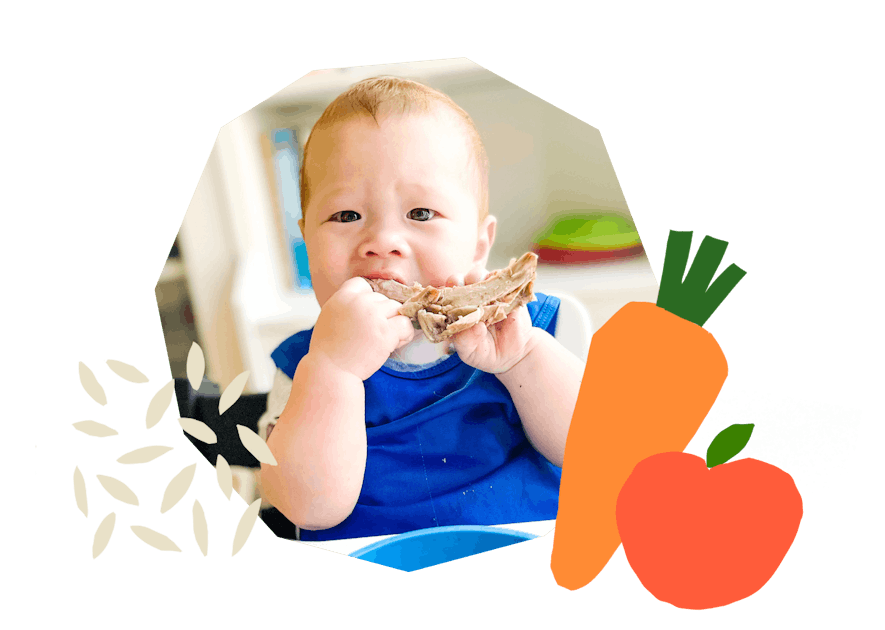
The Program Baby-Led Weaning with Katie Ferraro
A step-by-step digital program for starting solid foods safely and navigating the original 100 FIRST FOODS™ meal plan with baby-led weaning.
 EXPERT-LED, PROVEN APPROACH TO EATING REAL FOOD
EXPERT-LED, PROVEN APPROACH TO EATING REAL FOOD CONCISE VIDEO TRAININGS TO MASTER BABY-LED WEANING
CONCISE VIDEO TRAININGS TO MASTER BABY-LED WEANING 100 FIRST FOODS DAILY MEAL PLAN WITH FOOD PREP VIDEOS
100 FIRST FOODS DAILY MEAL PLAN WITH FOOD PREP VIDEOS
Baby-Led Weaning for Beginners Free Workshop
Is your baby ready to start solid foods, but you’re not sure where to start? Get ready to give your baby a solid foundation to a lifetime of loving real food…even if you’re feeling overwhelmed or confused about this next stage of infant feeding.
Get baby-led weaning recipes and tips delivered to your email inbox.


